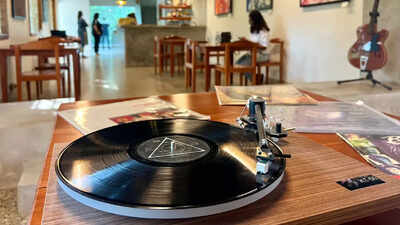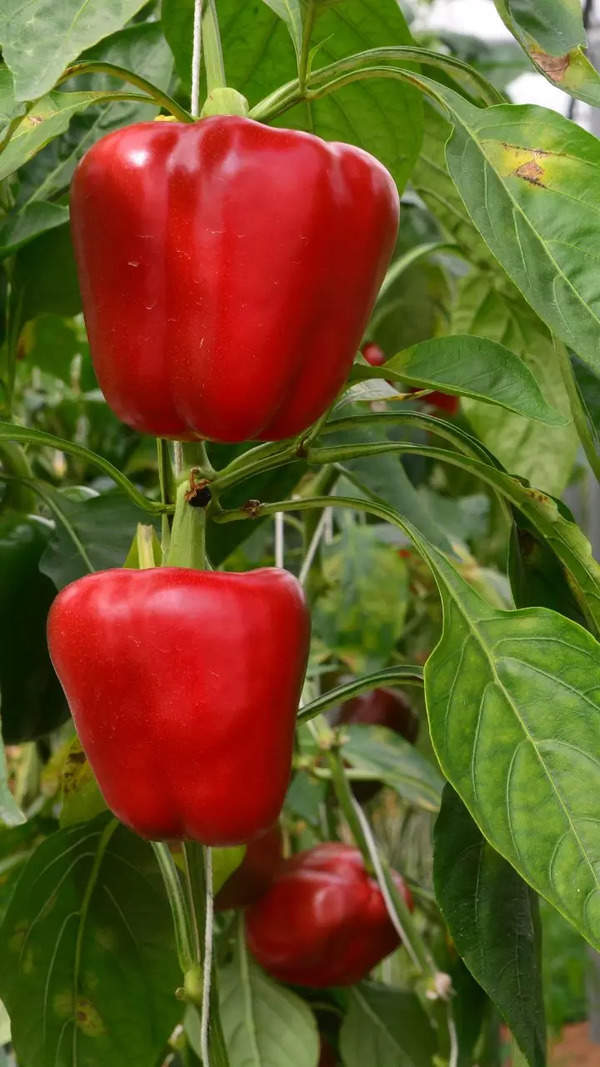- News
- City News
- chennai News
- Music lovers turn to vinyl records for unadulterated music
Trending
Music lovers turn to vinyl records for unadulterated music
CHENNAI: When Sudhir Viyas wants to listen to his favourite Ilaiyaraja songs from the 1970s, he doesn’t reach for his phone. Instead, he takes out his Ilaiyaraaja vinyl record and places it on the turntable carefully; one wrong move could ruin the record and player. But once it starts playing, it’s just him and the music, he says. “I grew up with cassettes and CDs but missed the warmth of ‘cassette music’ and the joy of holding something tangible, it makes it feel like it’s truly yours,” says the 32-year-old.
The quest made him travel further back in time, in search of vinyl records and players. This was in 2015, when they were available only in the black market and were more expensive. By 2018, they started becoming popular and hence more available and affordable. Sudhir bought his first turntable in 2020, an imported Denon for `35,000. “I also got two records – Michael Jackson’s ‘Thriller’ and John Lennon’s ‘Imagine’ – at `5,000 each.” Sudhir, who heads a creative marketing agency, now has 55 records in his growing collection.
More youngsters are moving towards vinyl music, says Neeraj Sablok, founder of NoizzyBox, an audiotech company. “It’s for the analogue sound, which offers a distinct warmth compared to digital audio.” Ever wondered why you feel like you need some silence after being in a loud club or after listening to digital music on the headphones? “It’s audio fatigue, which never occurs with live music or analogue sound,” says Neeraj, whose company manufactures devices like radios and cassette players which convert digital sounds into analogue.
“The conversations you hear in daily life are analogue sound, and analogue music is the same – the original as is – unlike digital music which can be edited.” Digital music may sound crisper, but is also more sterilised and devoid of natural imperfections, and that can wear you down. “It’s why unplugged music has several takers now. You feel the music and emotions more, just as you do when you hear the sounds of rain or the gush of waves in the background,” says Neeraj.
In India, the demand for vinyl is steadily growing, with current sales estimated at 5,000 units per month, says Saji Pillai, founder of Samanvii Digimedia Art and Solutions, a Mumbai-based vinyl manufacturing plant producing vinyl for the first time after four decades. “Major music labels, indie artists, and audiophiles value its unique sound quality and are contributing to this demand."
Lateef Mohamad, who has a swarm of youngsters visiting his antique shop, The Old Curiosity Shop on Anna Salai for turntables and gramophones, says, “Listening to music now requires the internet and many youngsters these days are doing everything they can to reduce screen time. Using turntables and going back to vinyl not only offers them that break from the digital world, but also introduces them to a more superior quality of music.” Lateef, who has more than 1,000 vinyl records, says 70% of those who come to buy turntables and vinyl records are youngsters.
At Vinyl and Brew, a new café in Alwarpet, visitors can request their favourite artists from a vinyl collection. “There is no listening fatigue though we play music throughout the day. Also, there’s something magical about the music from a vinyl record, the little crackles, the warmth, it just feels more alive,” says Ragu Muthiah, founder. “All these records are from the 1960s and 1970s, but the sound quality is excellent.”
Digital music files, especially mp3, are highly compressed, says Berty Ashley, audiophile and a vinyl collector. “Tapes are less compressed but vinyl is the only format with no compression, and comes closest to the original, live music. That’s why you feel the notes more, especially those of instruments like acoustic guitar and piano. It’s like listening to a concert in real time, where the unfiltered sounds from all the instruments reach your ears.”
While many vintage device buyers get it to gift their parents or grandparents, a growing number are buying it for themselves, at times to just listen to music without notifications distracting them. As human beings, we are meant to listen to natural sounds, says Neeraj. While digital may pump you up, with analogue, the music just touches your heart.
(With inputs from Muskaan Ahmed)
End of Article
FOLLOW US ON SOCIAL MEDIA
Visual Stories
Hot Picks
TOP TRENDING
Explore Every Corner
Across The Globe








